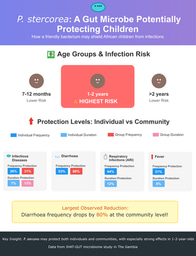Vaccine Hazards and Pandemic Risks in Aotearoa New Zealand, 2021
Published in General & Internal Medicine, Arts & Humanities, and Business & Management

As hīkoi mō te Tīriti, one of the largest protest marches in Aotearoa New Zealand’s history, made its way through the country to protest the Treaty Principles Bill, it reminded me of another demonstration in the country’s capital. On 9 November 2021, 2,000 people - tiny in comparison to the 42,000 who came together for Māori rights this month - protested the vaccine mandates the government had drawn up in response to the Covid19 pandemic.
The opposition to the government mandates troubled many of us during the pandemic, and stayed in the back of my mind as the different waves of the virus ebbed and flowed. I was working on public understandings of medical immunity in the early twentieth century, but I kept returning to those last few months of 2021, a period of significant change as the vaccine rollout for the general population began, the nation returned to the full lockdown of Alert Level 4, a persistent Delta outbreak saw the government phase out the elimination strategy that had kept the country largely virus-free, and announcements were made about imminent mandatory vaccination requirements.
So, I did what academics do: I applied for funding.
I wanted to work with a colleague in corpus linguistics, Andreea Calude, and bring on board an excellent research assistant we had both supervised, Jessie Burnette, to see what insights we could gain into the attitudes of the country during this time. I was particularly interested in the ways people in Aotearoa New Zealand perceived pandemic threat during that period: what scared them the most, what strategies were they implementing to deal with risk, what ways were they discussing hazards? We turned to X, Twitter as it was then, to gauge public sentiment.
Drawing on our respective disciplines and interpretative strengths we mixed quantitative and qualitative analysis, moving between the different insights that using AntConc concordancing software and close reading could give us. This blend of the social sciences and the humanities appeared to give one reviewer a strong sense of vertigo, but we saw this transdisciplinary approach a real strength. We got that reviewer on board in the end!
As we examined the tweets under these different lenses, with particular help from the theorisation of risk by Ulrich Beck, we found that pandemic risk was a major discursive thread for Twitter users using the hashtag #Covid19NZ between August and November 2021, but importantly, that it was the vaccine rather than the virus around which hazard perception and response were grouped.
Those who were opposed to the vaccine, the Twitter data showed, used rhetoric that entangled medical and political hazards, presented experts as untrustworthy, argued about restrictions on sovereignty, evoked threats to children, and warned against uncertain future dangers. This meant that they were effectively dwelling – or deliberately giving the appearance of dwelling – in what Beck calls the world risk society, a place of complex, unpredictable threats.
Their narratives of risk manifested in specific Twitter styles, which employed a consistently larger number of hashtags. The lack of conjunctions between the hashtags, we argued in our paper, encouraged a disordered reading of doubt and precaution, as the hashtags presented triggering phrases whose interconnections were hinted at rather than specified.
By contrast, despite the ongoing pandemic and slow rise in Aotearoa New Zealand’s mortality rates, those who tweeted in support of government measures were rhetorically led by solutions rather than risks. They were not living in a perceived world risk society: they saw lockdowns and vaccinations as valued, viable responses to pandemic hazards, as they were ways of resolving risk that were supported by science, backed by a government they considered relatively well-intentioned, and enforced by mandate seen as reasonable within the pandemic context. If those opposed to the vaccine presented a complex world of unpredictable risk, those in support presented a world of ready individual and community-based solutions.
There was, however, one important exception: the risks the pro-vaccine tweeters (who were in the majority) saw arising from those who were vaccine opposed. They saw those opposed to vaccination as unpredictable hazards, which for them predominantly displaced the pandemic risk from viral to human form. Not only could those opposed to the vaccine mandates cause the country’s defensive strategies to weaken, these group worried, their rhetoric could also contaminate.
In our data, then, Twitter uses located risk during the pandemic either in other people, or other people and the vaccine, but rarely in the virus itself.
How human it is, that in the midst of an major medical event, the actual source of the threat preoccupied far less than the human and institutional responses to the threat. Kia kaha as we engage with the human and institutional risks of 2025.
Follow the Topic
-
Journal of Medical Humanities

This journal is a peer-reviewed, scholarly journal that publishes innovative research, creative scholarship, poetry, essays, reviews, and short reports in the health humanities.
Related Collections
With Collections, you can get published faster and increase your visibility.
Comparative Health Humanities
Publishing Model: Hybrid
Deadline: Ongoing
The Future of Medical/Health Humanities
Publishing Model: Hybrid
Deadline: Ongoing


Please sign in or register for FREE
If you are a registered user on Research Communities by Springer Nature, please sign in